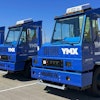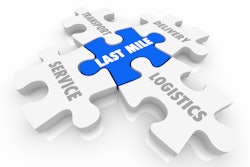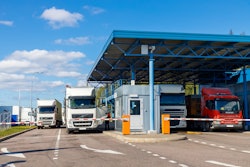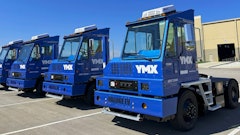
Now in the New Year, data-driven innovation will be front and center again, and the freight market will begin to turn and start correcting to improve conditions for the supply chain.
That said, it’s likely that navigating the unbalanced market, including volatile rates, extra capacity and equipment cost increases and other variables, will continue for a while.
Despite the current challenging environment, there are also exciting opportunities to look ahead and embrace the industry’s surge of data-driven technology and ongoing push to build stronger and safer avenues for interoperability and connectivity across the industry.
Here are five trends currently impacting transportation and food industry professionals and their operations.
Autonomous trucking
Autonomous trucking has been getting a lot of press, and it’s certainly a trend to watch, especially in the food and beverage logistics space that must adhere to many food safety regulations and requirements.
Many large food retailers are piloting programs that use autonomous trucks for both short-haul and long-haul trips.
Some logistics companies have been building far in advance, pulling at all levels of autonomy. However, more recently, many seem to be moving away from trying to create a solution in a siloed state and taking a more collaborative approach that will help everyone succeed.
Expect to see autonomous yard management in a more controlled environment before experiencing widespread autonomous trucks on highways. There's been positive, impressive progress, but expect to see an expanded time horizon and more concentration on current applications in 2024.
Artificial intelligence
This is an exciting space. Currently, the transportation industry mostly uses artificial intelligence (AI) from a machine learning perspective, but the future of AI in transportation is about further enabling transportation technology, helping shippers, carriers and intermediaries try to reduce friction, lower the cost per seat and drive down unit costs during a tough market period.
There are some underlying factors in this line of business that can help make a big leap to generative AI. Having the right data and insights to create learning models that pinpoint the right outcomes is going to take the industry to another level of sophistication.
From an internal perspective, AI can create efficiency and productivity for employees. Expect more user adoption increase when AI is used to augment and aid human deliverables, not replacing them entirely.
Several companies are already focused on frictionless transactions to increase efficiency and pace, but some carriers aren’t quite ready for it yet. The strategic lens always points back to meeting customers where they're at, including what mediums they are working through, what marketplaces they are looking for, how their business model is set up and how to augment that to build a bridge to the future.
The winners in AI will take over a portion of relationship management and the mundane, repetitive tasks that drivers and back-office staff frequently deal with, so individuals can be more productive, build deeper relationships and add more value to meeting their company’s operational goals.
Electric vehicles
With the rise of electric vehicles and trucks, one macro trend making headway is the truck-as-a-service (TaaS) model that’s making it easier and faster for carriers to gain access to electric trucks through a single provider with a monthly subscription that covers usage, uptime, utilization, maintenance, and other factors.
The EV infrastructure across the country remains a challenge as it is still being slowly built out, so start-ups are developing innovative solutions to eliminate the entry barriers for shippers and carriers wanting to transition to battery-charged electric trucks.
Some are providing access to electric trucks at a per-mile or per-route rate nearly on par with diesel, inclusive of vehicles, costs of charging infrastructure, installation and maintenance. This model is helping reduce the upfront costs of vehicle electrification for carriers by offering trucks as a “service” rather than as fixed assets.
Sustainability
The tip of the spear for sustainability in the cold chain is with shippers. They are leading most of the industry’s environmental, social and governance (ESG) initiatives and setting the tone and pace to create more sustainability within the supply chain, particularly in the food and beverage industry, which is laser-focused on preventing food waste.
We all want to be good stewards of the environment, reduce empty miles and create more stability so products remain on the shelf. This is already happening, such as warehousing products closer to consumers to expedite deliveries and consumer preference shifting toward eating local.
Making alternative fuels available is also important. Regulations must catch up to coincide with the current state and help bring carriers along. The trucking industry can’t be crippled with regulations that are too far ahead of our time.
There is also an emphasis on making diesel engines more efficient. In the 1980s, diesel engines were toxic in terms of miles per gallon and emissions, but with the evolution of electric vehicles, liquid natural gas and hydrogen, there are opportunities to do better.
Fraud
Unfortunately, fraud has become a multi-billion dollar drag on the transportation industry. It’s impacting insurance costs for carriers and has even put smaller carriers out of business. There are instances of fraud at all levels – shipper, broker, or carrier – where someone is impersonating one of the personas within the industry as part of a scam.
These five trends impacted the industry in 2023 and will continue to do so. Whether the market is up or down in 2024, leaders need to continue pushing the boundaries on innovation, connectivity and collaboration to keep the pace of change traveling in the right direction.




















